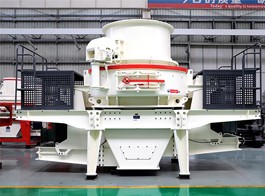Hot Products
An Industry Report on Chinese Wine Trade
E-mail: market@hxjq.comChina has a 6,000 year history of grape growing, and a 2,000 year history of wine making, and yet until this century the wine that was made in China was not of a style that would be recognized in the West.
Chinese wine industry has entered the high-speed growth stage in recent years. Though the international financial crisisbroke out in 2008, it did not place severe influence on Chinese wine industry. In 2008, Chinese wine production totaled 698,300 kiloliters, 5% increase over 2007. In 2009, Chinese wine production amounted to 960,000 kiloliters, rising by 37.48% YOY.
Wine belongs to the fast moving consumer goods. The competition on Chinese wine market concentrates on the market capacity and channels instead of product function, attribute and technology. Channels have become the key successful factor for competition. In China, the consumption channels for wine mainly include two categories – restaurants & hotels; retail channels such as shops and supermarkets. According to the statistics of the wine industry, the restaurants and hotels account for over 50% shares in Chinese wine market while retail channels occupy less than 50%. Among those retail channels, supermarkets and general merchandise stores take up over 50% while the rest are shared by convenience stores, exclusive stores and independent food stores, etc.
The concentration in Chinese wine industry is much higher than that in the beer and liquor industries. The sales volume of ChangYu, Great Wall and Dynasty has occupied over 40% on Chinese wine market.
The main competition for imported wines in China comes not from the Chinese wines, but rather the other forms of alcoholic beverages. The French Cognac houses, who are the main players in China, usually in the form of a joint Franco/Sino venture (e.g.,. Dynasty and Great Wall Wineries), have discovered that brandy, and not table wines are the current top sellers in China. Because the consumer is looking for the effects of the ethanol, rather than the taste of the beverage, the lowest grade brandy's, most of which would be below the regulations of most nations, are in the greatest demand. These brandies, when produced or bottled in China (bringing in bulk alcohol, adding caramel color and water, and calling it brandy, is a successful model in China), often sport such terms as VSOP and other designations that have no legal meaning in China and therefore are only used as means of recognition, not a designation of quality.
By far and away the most compelling aspect of the Chinese market is the demographics. While there is not currently any portion of the market that would be likely to drink table wine on a regular basis, the shear numbers are staggering. If each of the 1.2 billion people of China bought a single bottle of wine a year, they would outrank most of Europe as consumers. Even when you take just the upwardly mobile youth of the cities, the traditional wine market of other countries, you are talking about a population of over 300 million, more than 10 time the potential market of the US and many more times that of other Western countries.
In summary any venture to export wines to China must be prepared to establish their brand over a long and potentially unproductive period. They must be able to price their product, after paying 70% duties in such a way as to compete with other alcoholic beverages, especially beer. They must be willing to create or support a distribution system in each major urban area. They must create not only their own storage facilities, but help their customers learn about storing, and even opening bottles of wine. With perseverance, and deep pockets, the potential to market wine to 1.2 billion people is a staggering concept with great potential for profit, in the long run. Education above all else is required before the Chinese people will become a wine drinking nation of even the most meager sort.






